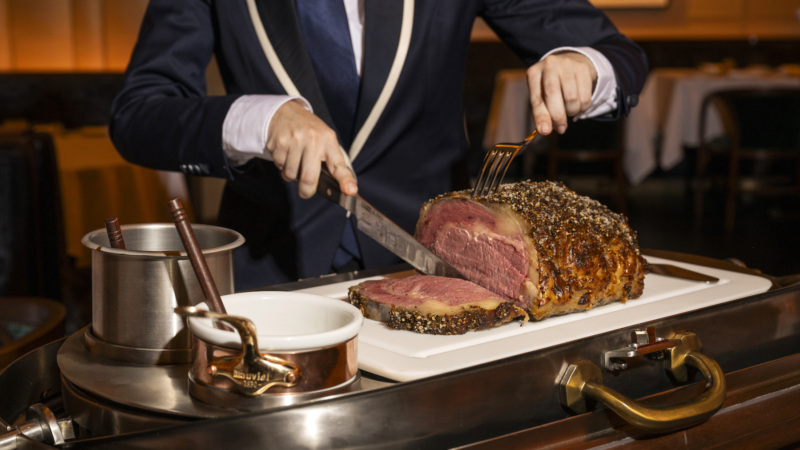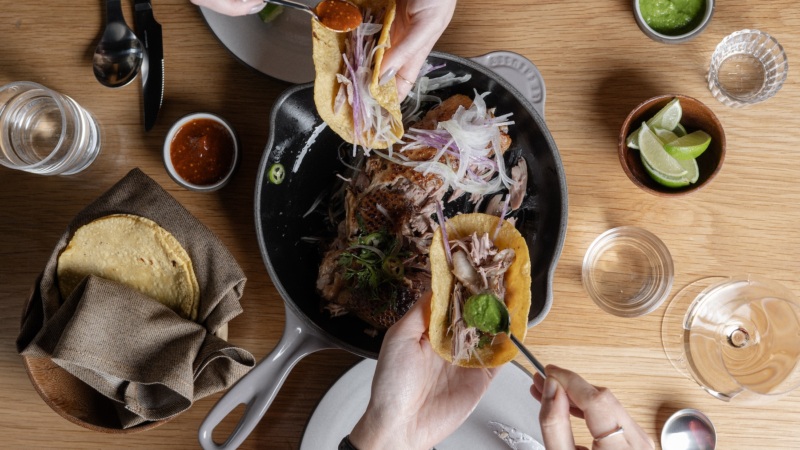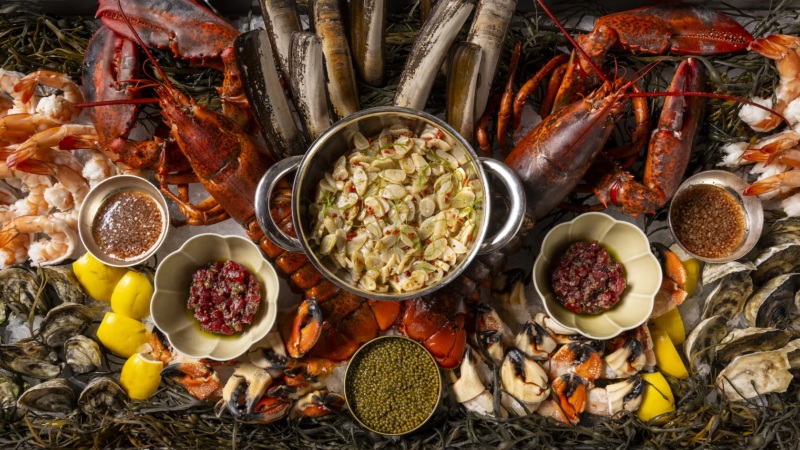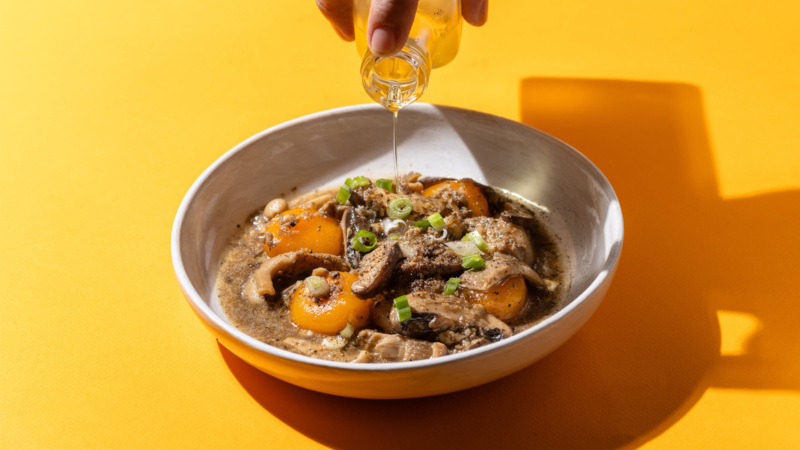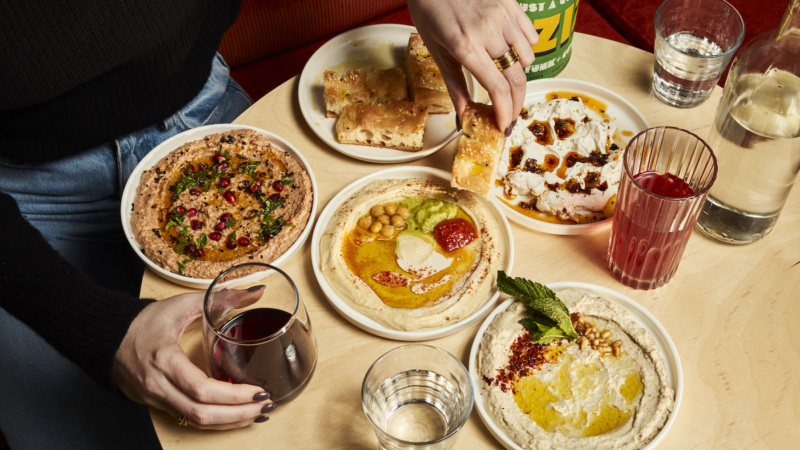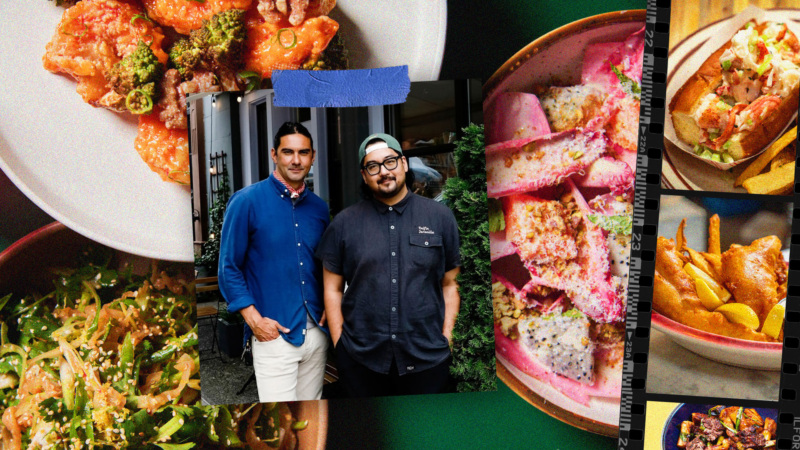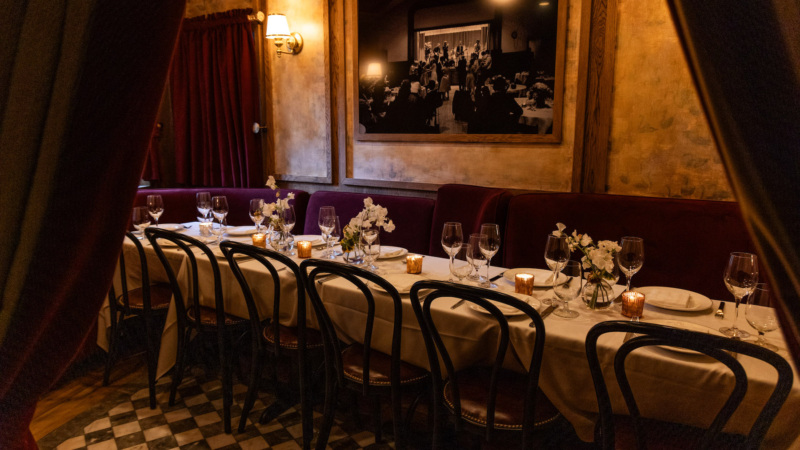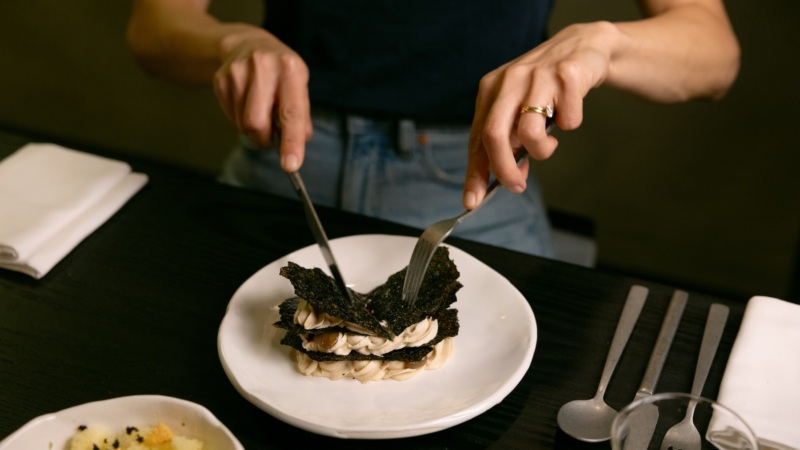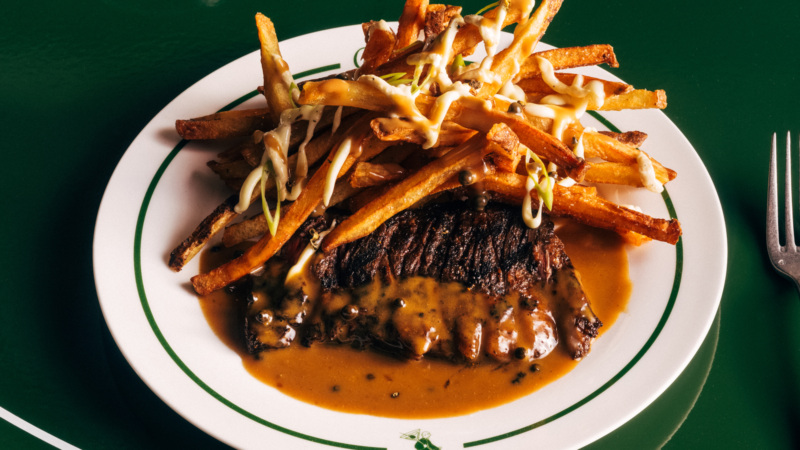
The Ingredients May Be New. The Quest For Deliciousness Is Eternal.
In 2012, the longtime Southern restaurant Acme, on Great Jones Street in Manhattan, transformed into a fashionable New Nordic restaurant. It was the height of the New Nordic wave and the new Acme delivered on the promise of refined, foraged fare. Over the years, the restaurant has gone through a few reinventions, often with a menu that reflects what’s currently in vogue. Five years ago, Acme repositioned itself as a New American bistro, which it remains.
Its latest menu has comfort foods like fried calamari and dry aged beef sliders, and then there are unexpected ingredients like doubanjiang chicken skewers and gochujang chicken wings. To me, those dishes sound delicious and I can practically feel the buzz of umami-rich sauces on my tongue. But, in my years of eating out in New York, I would hardly expect to find doubanjiang on the menu of a trendy restaurant in NoHo that once made a name for itself serving hay roasted sunchokes. Clearly, things have changed.
Doubanjiang is a Chinese fermented bean sauce, an essential member of a category of ingredients that deliver the intangible sensation known as umami. Not only is umami a fundamental taste, alongside salty, sweet, sour, and bitter, it is arguably the one that chefs care about most, if only because it’s so satiating. (Biologically, this makes sense because when we eat umami-rich foods, our taste buds latch on to the glutamates, which signal protein, an essential building block for our bodies).
If the sources of umami in restaurant kitchens signal what holds value in professional cooking, then we’ve come a long way lately—from textbook French veal stocks, Italian anchovies, and Japanese dashi. The widespread use of deeper, funkier umami bombs beyond their original cuisines shows how open-ended the quest for flavor has become, reflecting a change in both the cook and the diner’s familiarity with and interest in previously unpalatable tastes. It’s a trend fueled, in part, by the recent emphasis on plant-based cooking in restaurants, as cooks look to get more creative in drumming up flavor.
All this is to say, with its fermented bean sauces and chili glazes, Acme is simply living up to its precedent as a mirror for what’s good in restaurants.
Umami is a relatively new word; it was created in the early 1900s to describe the moreish taste which Japanese chemist Kikune Ikeda identified in kombu. By definition, umami is the essence of good flavor. After Ikeda invented a process to isolate the glutamates that impart umami, which created a product we now know as MSG, he co-founded a company that would sell it to cooks around the world. The name of his company, Ajinomoto, translates to, “foundations of taste.” In France, Escoffier famously called his repertoire of glutamate-rich stocks the basis of French cooking. (“Without it, nothing can be done.”) But the concept of umami is as old as cooking itself, and every culture has its own form — especially those with a history of restrictions on animal consumption. In these cases, when meat was prohibited or, just too rare and expensive, what resulted was a sophisticated method of preserving and fermenting plants, or tofu and seafood, into the building blocks of flavor.
In many restaurant kitchens, umami has historically had a Western European bias (and more recently, a Japanese one). This is probably linked to a lingering belief that places French technique atop the hierarchy of skills as the civilized cook’s choice. This thesis has been perpetuated both in culinary schools and the industry more broadly. Of course, the bias doesn’t apply to the cuisines that employ their own native sources of umami, like the Nigerian restaurant that might use fermented locust bean to add savor to its soups, or the Korean restaurant that stirs in doenjang to round out a restorative broth. But the siloed use of these ingredients reinforced the fact that in restaurant kitchens, umami sourced from beyond the scope of Western European and Japanese traditions has typically been confined to its specific cuisine.
Maybe it’s because the smell of certain foods, like kimchi or bagoong, are just too potent — too “foreign,” whatever that means — for the uninitiated. Strong-smelling foods have long been a source of embarrassment for new immigrants in the United States, with a whole genre of personal essays to prove it. Garlic, today the most ubiquitous of ingredients, and a generous source of umami, was once reviled as something only Italian immigrants used. Its strong aroma was weaponized as a racial slur. Thankfully, these days, it’s hard to imagine a restaurant kitchen pantry without a robust stock of garlic.
To be sure, there has been a steady change in attitudes, in America as elsewhere, towards cooking with unfamiliar, viciously aromatic ingredients. Fermentations like soy sauce, miso, and even some fish sauces are now ubiquitous outside their culture of origin, and have been staples in restaurant kitchens for years. Justin Lee is the chef at a vegan Chinese restaurant called Fat Choy on the Lower East Side, but prior to that, he cooked at Jonathan Waxman’s seasonal Italian restaurant Barbuto. He tells me about the time he added miso paste to ribolita, a hearty Italian stew, to amp up the flavor while keeping the dish vegetarian. “It’s not Italian-Japanese crossover,” he explains. “It’s just saying, ‘I’ve used this ingredient, it’s in my flavor pantry, why don’t we just put it in here?’ I think that a lot of kitchens are probably doing stuff like that.”
▪️
Garlic, today the most
ubiquitous of ingredients,
and a generous source of
umami, was once reviled
as something only
Italian immigrants used.
Its strong aroma was
weaponized as a racial slur.
▪️
Now that Lee is in charge of his own kitchen, he is definitely doing more stuff like that. After cooking at meat-friendly restaurants like Barbuto and The Cannibal, going vegan at Fat Choy was an ethical choice — buying and cooking beef was not something Lee wanted to do amid a growing climate crisis. But the daily practice of finding flavor in plant-based ingredients has been one of discovery and delight. “We’re trying to open ourselves up to as much knowledge as we can to further our food,” Lee told me. At the restaurant, Lee plays around with mushrooms, fermented bean pastes, and other fermented condiments to really draw out the flavor of his Cantonese-inspired dishes.
As the rest of the restaurant world veers towards more vegetarian cooking, regardless of the motivations, the quest for umami inevitably reaches deeper into the global pantry. The standard of bone broths or animal fats and proteins are, if not losing favor, finding a smaller audience than they used to. Lee, who is Chinese American, appreciates the trend of boosting umami with newer niche ingredients, some of which, like fermented black beans, are already Chinese pantry staples. He believes it’s a sign that chefs are reshaping their palates, and their perceptions. As these ingredients are adapted in new ways, as with Lee adding miso to his ribolita, diners’ palates are expanding too. “People are starting to taste things and say, that’s weird, but I like it. We’re acquiring a taste for things that aren’t super white [and] Eurocentric, which is wonderful.” (It also doesn’t hurt that home cooking is booming right now and the home cook’s pantry is undergoing a similar umami-fueled expansion.)
The shift towards plant-based cooking has also brought an overdue focus to cuisines with long histories of achieving those bass tones of umami using a different slate of ingredients. Yara Herrera is the chef de cuisine at Xilonen, a vegan Mexican restaurant in Brooklyn, run by the chef Justin Bazdarich. Herrera is Mexican American and while she initially thought cooking at a vegan Mexican restaurant would be unnatural, she learned that vegetarian cooking was common in Mexico prior to colonization, which introduced pigs and cattle to the Mesoamerican diet. At Xilonen, Herrera adeptly transforms a few simple ingredients — chiles, onion, tomato, cilantro — into an array of sauces that explode with satisfying flavors. “I never really appreciated the food in my culture as much as I do now,” Herrera says.
For that matter, the proliferation of new umami-rich ingredients (or in Herrera’s case, techniques to develop umami) can partially be explained through access. It was a lot harder to find a store that sold doubanjiang ten years ago. And even if a cook could find it, because you can find anything in New York, they would have to know what to do with it. But today, information about ingredients travels so much faster, along with much easier access (doubanjiang on Amazon, if that’s your thing), which leads to a much lower barrier to experimentation.
And in this era of the chef-influencer, there is greater potential for new ingredients to quickly earn widespread adoption. “If you have a platform, it’s easy to reach people. For anyone under the global telescope, everyone’s watching.” says Herrera. It reminds me of the various fermentations that have come out of the R&D labs at Momofuku (David Chang’s chickpea hozon), Noma (the recent garum experiments), and now, Eleven Madison Park. Who knows what new sources of umami kitchens like these will embrace next?
Perhaps the surge in new forms of umami can ultimately be explained by the simple fact that chefs are constantly on the hunt for the most delicious flavors. In the book Chinese Gastronomy, co-written by Hsiang Ju Lin and Tsuifeng Lin, there appears a quote: “Eating is the pursuit of flavor.” I would modify this slightly to cooking is the pursuit of flavor. And thus the limitations placed on fermented foods that were once too strong for the mainstream American palate are coming undone, toppled by vats of dank sauces and delicious temperature-controlled rot.
Hopefully, alongside this comes the decline of traditional thinking that French, Italian, or even Japanese, pathways are the only respectable ones for a restaurant chasing umami. “When you put something in your mouth, and it’s amazing,” says Fat Choy’s Lee, “those hierarchies of your preconceived notions fade away.” And that, ultimately, is the deeper lesson behind this new umami. No matter its origin, this is an elemental taste, harnessed by cooks across the world over centuries. The context and culture may change, but the sense of savor is hard-wired.
Mahira Rivers is a restaurant critic and writer based in New York, and Resy’s New York columnist. In addition to spending five years as an anonymous inspector for The Michelin Guides, her writing has been published in The New York Times, New York Magazine, Food & Wine, GQ and elsewhere. Follow her on Twitter and Instagram. Follow Resy, too.







